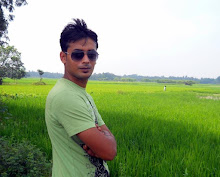Memories from the High Altitudes of Bhutan Bhutan is an amazing hill destination. It is one of the most peaceful countries in the...
Memories from
the High Altitudes of Bhutan
Bhutan is an
amazing hill destination. It is one of the most peaceful countries in the
world, and is bordered on the north and east by Tibet and on the south and west
and east by India.
I had one of
the most unique travel experiences in Bhutan, which was enhanced by exploring
the ancient monasteries, fortresses (called Dzongs), ancient temples with
prayer flags fluttering high, eating chilies and cheese, learning about
Buddhism, and the immense warmth of its people.
As soon as
the peaks of Everest and Kanchenjunga emerged from behind the clouds, I went
crazy. I was still on the flight to Bhutan, and we were hovering over the
mighty Himalayas, and a variety of flowers.
Dzongs are
traditional Bhutanese fortresses. These are usually built on a high altitude
overlooking a city, offering panoramic views. These tall citadels, whitewashed
in stone, have spacious courtyards, Lhakhangs (Buddhist temples) and most of
them have administrative offices within them.
We had
planned a day for all the sightseeing and shopping in Paro. On the way to Paro,
just about midway from Thimphu, we stopped by the Chain Bridge, which happens
to be a very old bridge made with chains crossing the Paro Chhu River, leading
to a temple. You have to walk slowly on the swaying bridge, although it was
quite safe.
I was to see
all the structures before sunset, as this was my only day in Paro. We then
headed straight up the paved road from Takstang Lhakhang to Drukgyel Dzong.
With a delightful village nestling at its foot, the dzong is built on a rocky
spur that blocked the Paro valley and protected it from invasions from the
north. It was established in 1647 by Shabdrung Namgyel. Drukgyel Dzong means
‘fortress of the victorious Drukpas’. In 1951, a butter lamp fell over and
started a terrible fire. Only the walls remained, and till today the Dzong is
no more than a dramatic silhouette falling into ruins, with its backdrop
painted by the scenic peak of Mt. Jomolhari.
Just when we
were talking, I saw something that I would never forget in my life. A passenger
aircraft was landing and was about to touch the runaway. Many people may think
this is a quite common scene, but when the aircraft makes a descent with
mountains on both of its sides and onto a runway that has roads for regular
traffic on both of its sides, it for a moment makes you think if the aircraft
is making an emergency landing in the town. And if this doesn’t hit you, the
fact that the aircraft looks seemingly small before the huge mountains does hit
you. The moment this happened was so hypnotic that none of us could even think
of reaching for our cameras to capture this moment. All of us were too
mesmerized in watching it happen.
The next
amazing experience awaited us in Punakha. Unlike Thimphu or Paro, Punakha is
not a city. You might find the Lobesa market to be bustling with activity but
otherwise, the place is quite deserted and very peaceful. There were no buses
plying from Punakha to Thimphu that day and we waited outside the hotel, on the
highway, hoping to get a shared cab, which we were lucky enough to find.
The drive
gave us a huge chance to see Bhutan’s countryside at a variety of altitudes, as
we drove through river valleys and across mountain passes. Starting at an altitude of 2200 meters at
Paro, we passed through altitudes as high as 3090 meters at Dochula, and as low
as 1240 meters at Punakha.
A few hours into the drive through The Himalayas brought us to Dochu La Pass. It is an absolutely magical and enchanting
place with beautiful scenic views of distant mountains and valleys. The
roundabout has 108 Stupas or memorial Chortens. Since the pass is at quite a
height, the clouds keep passing through it, which makes this very serene.
The building
of the Dzong in itself was massive and the confluence of the Phho Chhu and the
Mo Chhu rivers at its base further added to its magnificence. A well maintained
and clean wooden bridge across the Mo Chhu led us into the Dzong. The Dzong was
not only empirical, but it was equally huge. It took us almost two hours to
walk through the entire Dzong. Despite visiting the Dzong during active work
timings, I could barely hear a whisper! This might partially also be because
there was a bodhi tree and a stupa within the Dzong. The Dzong had different
rooms designated for administrative functioning in lines with Indian
municipalities and a Royal Court of Justice. But I didn’t see a single lawyer
loitering around soliciting clients.
After
breakfast the next morning, we went to the airport for our journey back home.
We had a wonderful holiday in Bhutan!!!








No comments
Note: Only a member of this blog may post a comment.